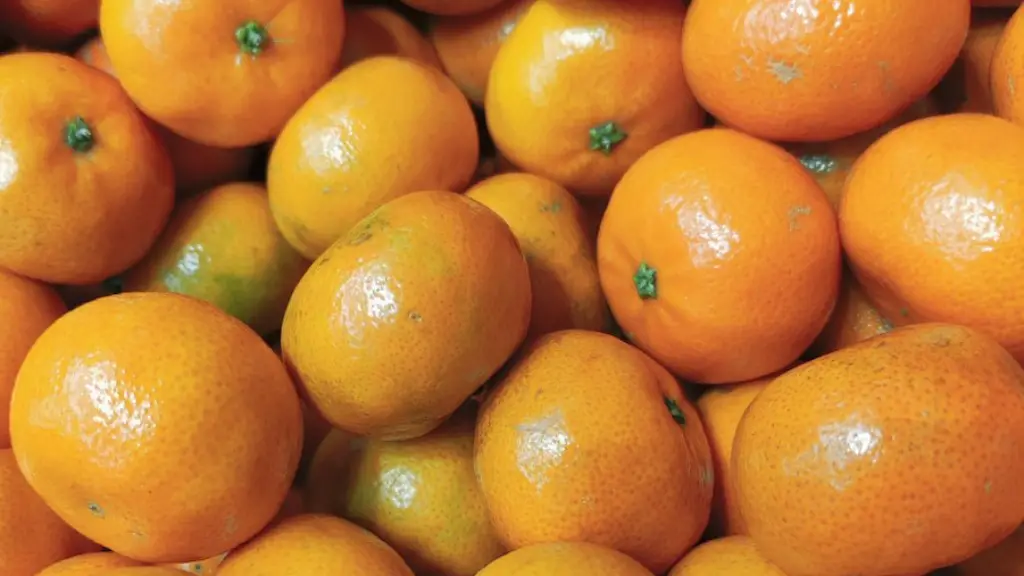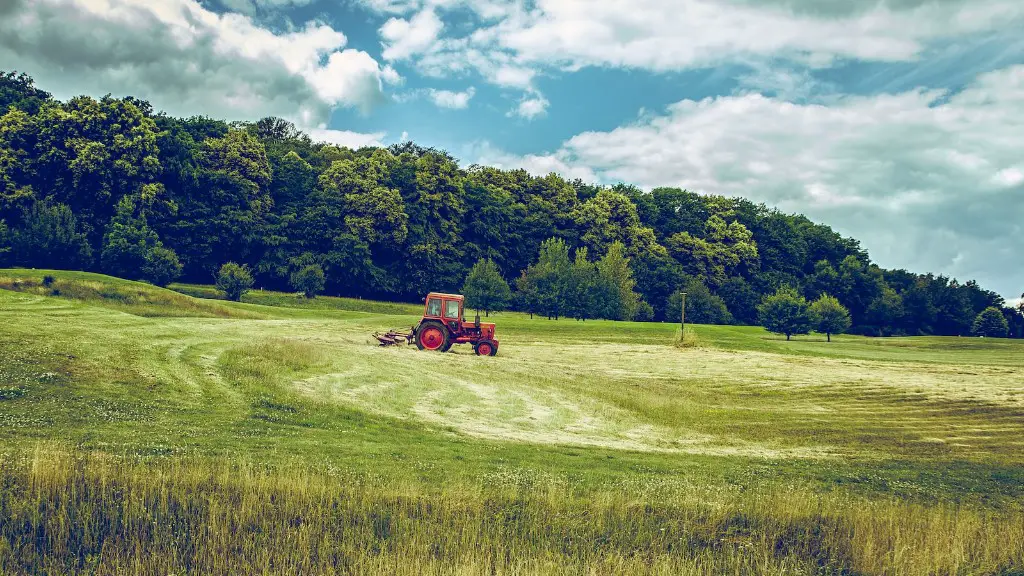Agriculture is a major industry in the United States, but it does not top the list of the biggest industries in the country. The largest industry in the United States is the service industry, followed by manufacturing and retail. Though agriculture plays a vital role in the US economy, other industries are larger.
Agriculture has been around since the dawn of civilization and is an important industry in the US economy. Agricultural products, such as fruits, vegetables, grains and livestock, are essential to our nation’s food supply. The US Department of Agriculture estimates that 62 percent of all agricultural production in the US comes from large-scale farms and ranches.
Agriculture plays an integral role in providing food for the nation and for exporting to other nations. It contributes about $328 billion to GDP and supports more than 22 million jobs. However, it makes up only a small percentage of total US economic output. Farm employment as a share of total employment has decreased since the late 1800s and now accounts for less than two percent of total US employment.
Agricultural advances over the past few decades have allowed US farmers to produce more food using less land and fewer resources. This has enabled US farmers to remain competitive on the global market, despite their relatively small size. Today, US exports are worth almost $138 billion, making agriculture a major contributor to the US economy.
Despite its minor share in the overall US economy, agriculture remains a critical part of the nation’s success. It provides a stable market for farmers, creates jobs and contributes to economic growth. Moreover, the US government provides a number of programs to support the agricultural industry and to ensure its long-term viability. These include price supports, tax credits and subsidies, as well as research and development grants for new technologies.
In short, agriculture is a vital but minor player in the overall US economy. While it provides a stable market for farmers, it is the service and manufacturing industries that account for the lion’s share of economic output in the United States.
Role of Technology
Agricultural technology has seen dramatic advances in the past few decades, making US farmers more productive and efficient. Technology has allowed US farmers to use precision fertilisers and pesticides, as well as automated harvesting and planting machines, to reduce labour costs and increase yields. Moreover, newer technologies, such as GPS-based machinery and drones, allow farmers to monitor and manage their fields more effectively. These advances have allowed US farmers to remain competitive on the global market and provided a stable market for their products.
Agricultural technology has also given US farmers access to markets from around the world. With the latest technology, farmers can communicate in real time with buyers in other countries, allowing for transactions to be completed quickly. It has also enabled farmers to access information about global markets, allowing them to make informed decisions about the best prices for their products.
Technological advances have been a major factor in the success of US agricultural exports. These advances have allowed US farmers to produce larger quantities of higher-quality products at lower costs. This has enabled US farmers to remain competitive on the global market and to benefit from increases in global demand.
In addition to providing US farmers with access to global markets, technology has also enabled them to monitor weather and soil conditions more accurately. With this data, farmers can better plan their crop production, reduce wastage and increase yields. Farmers can also be more precise when using inputs, such as water and pesticides, which allows them to reduce their environmental impact.
In conclusion, technology has had an immense impact on US agriculture and its ability to compete in the global market. It has allowed US farmers to produce higher-quality products at lower costs, as well as better manage their operations and reduce their environmental impacts.
Challenges Faced By Farmers
Despite its success, the US agricultural industry still faces a number of challenges. Low commodity prices, climate change, and the concentration of farmland into fewer hands have made it difficult for US farmers to remain competitive. Moreover, the decreasing number of small family farms has resulted in a decrease in agricultural employment, as well as a decrease in rural population and a lack of access to capital for small farmers.
Low commodity prices are a major challenge facing US farmers. Prices for commodities such as grains and livestock are vulnerable to fluctuations in global markets, forcing US farmers to compete in a global market with slim margins. Furthermore, the US government often sets prices below that are lower than the cost of production, making it difficult for US farmers to remain profitable.
Climate change is another major challenge facing the US agricultural industry. Increasing temperatures, extreme weather patterns and drought are becoming more frequent in many parts of the country and can negatively affect crop yields and livestock health. Furthermore, extreme weather events can damage or destroy crops, as well as disrupt supply chains.
Finally, the concentration of farmland into fewer hands has made it difficult for small farmers to remain competitive and remain profitable. As larger farms take control of more land, small farmers often have difficulty accessing capital and other resources and face a lot of competition when trying to sell their products.
In summary, US agriculture faces a number of challenges, such as low commodity prices, climate change and the concentration of farmland into fewer hands. These challenges have made it difficult for US farmers to remain competitive and to provide a stable market for their products.
Government Support for the Agriculture Industry
The US government provides a number of programs to provide support to the US agricultural industry. Federal and state governments subsidise the industry, and provide a range of agricultural subsidies, price supports, and research and development grants to assist US farmers.
Subsidies are a form of government aid to farmers, usually in the form of direct payments, or income tax deductions, for farmers to help them manage their operations. The US government also provides a wide range of price supports and other market interventions, such as loan programs, to help farmers manage their businesses.
Research and development grants are provided to US universities, research centers and other institutions to support agricultural research and the development of new technologies. These grants are used to research and develop sustainable farming practices, better pest management and other agricultural innovations.
Finally, the US government provides a range of tax incentives to encourage US farmers to adopt new technologies and sustainable farming practices. These incentives include tax credits, grants and other incentives to encourage more efficient and sustainable farming practices.
In short, the US government provides a variety of subsidies, tax incentives and supports to help US farmers remain competitive and make their operations more sustainable. These programs aim to create a stable market for agricultural products, as well as create jobs and enhance the economic well-being of rural communities.
Impact of the Agriculture Industry on the Economy
The US agricultural industry has a major impact on the US economy. It contributes about $328 billion to GDP and supports more than 22 million jobs. Moreover, US exports of agricultural products have grown rapidly in recent years, reaching almost $138 billion in 2019.
Agriculture is essential to economic growth, as it serves as a stable source of employment and a reliable source of income for rural households in the US. Agriculture also provides a stable market for the US’ products and contributes to its positive balance of trade. Furthermore, agricultural products are essential ingredients for many consumer goods, such as food, beverages, clothing and fuel.
In addition to its economic impact, agriculture also has an important social impact on the US. Farming is a vital component of the US rural economy, and provides essential services, such as food production and rural development. It also contributes to US energy security, as agricultural products, such as biofuels, are increasingly being used to meet the nation’s energy needs.
Finally, agriculture is also important for environmental protection. Modern agricultural practices, such as crop rotation, integrated pest management and conservation tillage, are becoming increasingly popular and can reduce soil erosion, conserve water, conserve soil fertility and reduce air and water pollution.
In conclusion, US agriculture has a major impact on the US economy. It contributes to GDP growth, provides a stable market for US products and reduces poverty in rural areas. In addition, it is a vital component of US energy security and has an important role to play in environmental protection.
Impact of Globalization on the Agriculture Industry
Globalization has had a significant impact on the US agricultural industry. International trade agreements have opened up US agricultural markets to foreign competitors, making it more difficult for US farmers to remain competitive. Furthermore, as it becomes easier for foreign goods to enter the US market, US farmers have had to reduce their production costs in order to remain competitive.
Globalization has also enabled US farmers to access global markets more easily, and to respond to changes in global demand. Exports are increasingly important for US agricultural producers, with US agri-food exports reaching almost $138 billion in 2019. This export market is essential for US farmers to become more competitive and diversify their income sources.
At the same time, globalization has also exposed US agriculture to other markets’ environmental and labor regulations. This has made it more difficult, and more expensive, for US farmers to remain competitive in the global market. This is especially challenging for smaller, family farms, which lack the resources to comply with these regulations.
Furthermore, globalization has led to an increasingly volatile global market, which can have a significant impact on US agricultural prices. Fluctuations in global markets can cause prices to rise or fall drastically, making it more difficult for US farmers to remain profitable.
In conclusion, globalisation has had both positive and negative impacts on the US agricultural industry. On the one hand, it has opened up new global markets for US farmers, allowing them to access new sources of income. On the other hand, it has also exposed US agriculture to increased competition and introduced new environmental and labor regulations.





